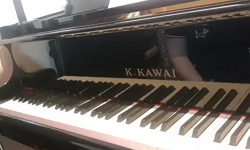Purpose: Nonepileptic paroxysmal events (NPEs) are common in infancy and may be misinterpreted as epileptic seizures. With a knowledge of common NPEs, they can usually be diagnosed based on a detailed history and examination. So far, no studies have e...
http://chineseinput.net/에서 pinyin(병음)방식으로 중국어를 변환할 수 있습니다.
변환된 중국어를 복사하여 사용하시면 됩니다.
- 中文 을 입력하시려면 zhongwen을 입력하시고 space를누르시면됩니다.
- 北京 을 입력하시려면 beijing을 입력하시고 space를 누르시면 됩니다.
https://www.riss.kr/link?id=A106625483
-
저자
Ha Rim Noh (Department of Pediatrics, Daegu Catholic University School of Medicine, Daegu, Korea) ; Young Hwan Kim (Department of Pediatrics, Daegu Catholic University School of Medicine, Daegu, Korea) ; Kye Hyang Lee (Department of Pediatrics, Daegu Catholic University School of Medicine, Daegu, Korea)

- 발행기관
- 학술지명
- 권호사항
-
발행연도
2020
-
작성언어
-
- 주제어
-
KDC
516
-
등재정보
KCI등재후보
-
자료형태
학술저널
-
수록면
23-29(7쪽)
- DOI식별코드
- 제공처
-
0
상세조회 -
0
다운로드
부가정보
다국어 초록 (Multilingual Abstract)
Purpose: Nonepileptic paroxysmal events (NPEs) are common in infancy and may be misinterpreted as epileptic seizures. With a knowledge of common NPEs, they can usually be diagnosed based on a detailed history and examination. So far, no studies have explored the semiological presentations of NPEs in infancy without video electroencephalographic (VEEG) recordings. We aimed to describe the phenomenology of NPEs in infancy to provide useful information to clinicians, enabling easier diagnoses without VEEG studies. Methods: We reviewed the medical records of 63 patients aged from 1 to 12 months diagnosed with NPEs at Daegu Catholic University Medical Center from September 2006 to June 2017. We classified the phenomenological features into five types: abnormal body movement, eye changes, breathing abnormalities, behavioral symptoms, and autonomic symptoms. Results: Of the 63 patients, 37 were male and 26 were female. The mean age at onset was 6 months, and the mean duration of symptoms was 22.5 days. Abnormal body movements were the most common feature (88.9%), followed by eye changes (31.7%), autonomic symptoms (11.1%), breathing abnormalities (6.3%), and behavioral abnormalities (3.2%). The most common type of abnormal body movements was shivering-like movement (32.1%). Initially, 30 patients (47.6%) were diagnosed with unclassified NPEs, nine (14.3%) with sleep myoclonus, six (9.5%) with benign paroxysmal tonic upward gaze, and five (7.9%) with benign myoclonus of infancy. During follow-up, two patients (3.2%) were diagnosed with epilepsy. Conclusion: Knowledge of the phenomenological characteristics of NPEs in infancy can be useful for making a correct diagnosis.
목차 (Table of Contents)
- Introduction Materials and Methods Results Discussion References
- Introduction Materials and Methods Results Discussion References
동일학술지(권/호) 다른 논문
-
ocOrolingual Tremor on Smiling
- 대한소아신경학회
- Sun Ah Choi
- 2020
- KCI등재후보
-
Clinical Differences between Enterovirus and Human Parechovirus in Children and Infants
- 대한소아신경학회
- Seonkyeong Rhie
- 2020
- KCI등재후보
-
- 대한소아신경학회
- Young Jun Ko
- 2020
- KCI등재후보
-
Febrile Infection-Related Epilepsy Syndrome: Refractory Status Epilepticus and Management Strategies
- 대한소아신경학회
- Yun-Jin Lee
- 2020
- KCI등재후보





 스콜라
스콜라






